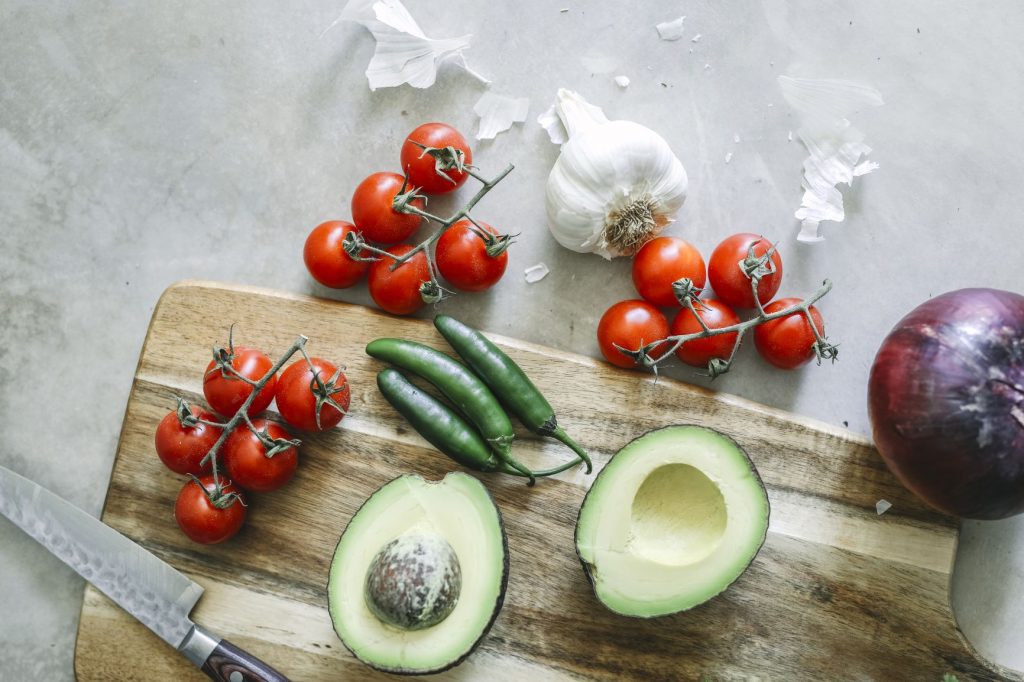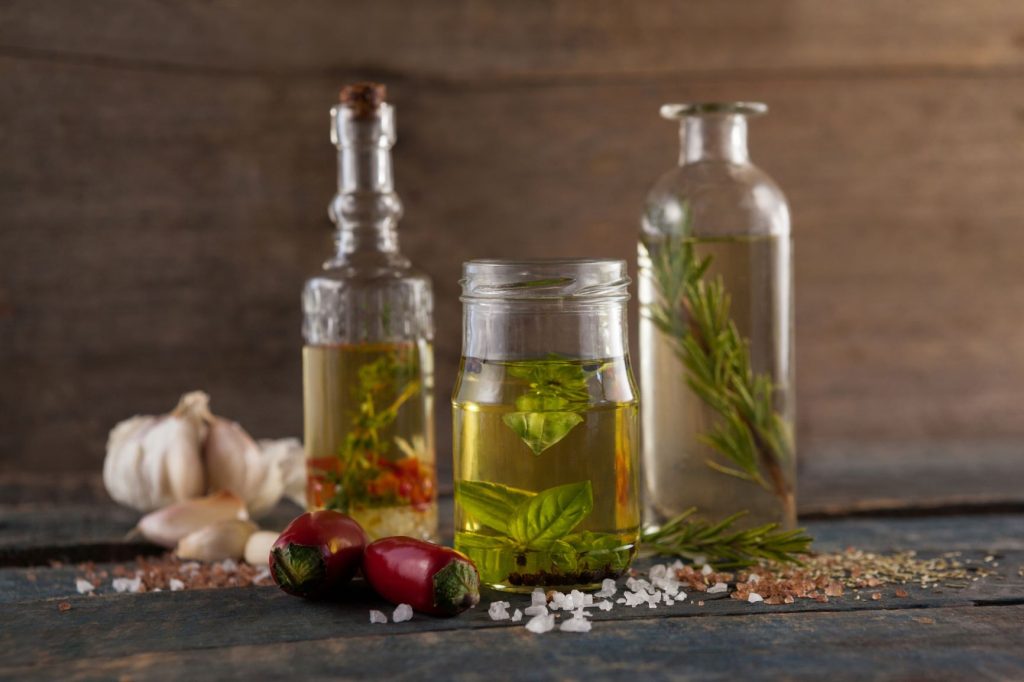Natural pain relief after surgery helps to speed up recovery and reduce the chances of post-surgery complications like pneumonia and blood clots. When pain is managed and controlled, it makes it easier for patients to carry out important tasks, such as walking and deep breathing exercises. Proper management of pain empowers people to take an active role in making choices on the treatment of pain. After a surgical operation one may be surprised that the site of incision is not always the only area of discomfort.
After surgery, pain may be felt in the following area;
- There may be an increased pain around the incision site during movements and activities, such as walking, sitting upright, and coughing.
- Pain may be felt in the throat, and the throat may be sore or scratchy.
- Pain may be felt in muscles of the shoulders, neck, back, or chest from lying on the operating table.
Risks Associated with Using Pharmaceutical Drugs After Surgery?
Epidural analgesics, or pain relief medications, are used to control and manage pain after surgery. These drugs are available in a wide variety and can be administered in several ways like through a suppository, liquid, IV, pill form, lozenge, and even as a patch, where the medication is absorbed through the skin.
Some common side effects of epidural analgesic include:
Inability to urinate:
The bladder nerves are often affected by the epidural analgesic. When this happens, a tube (catheter) is inserted into the bladder to help drain away urine. A catheter is often needed after major surgery, with or without an epidural analgesic.
Itching:
Itching is a side effect of some pain relief drugs. However, anti-histamine drugs can help to curb the itching, or the drug in the epidural can be changed as well.
Low blood pressure:
When you have an epidural, it is normal for the blood pressure to drop a little. When this happens, fluids and drugs can be used to maintain blood pressure.
A sickly feeling:
Unlike other pain relief methods, this is less common with an epidural. This sickly feel could be treated with anti-sickness medicines.
Headache:

It is possible to get a severe headache after having an epidural, headaches happen quite often after surgery. This is because the needle used to place the epidural inadvertently punctures the bag of fluid that bathes the spinal cord, and a small amount of fluid leaks out, thereby causing a headache. If you observe a severe headache that gets worse when you sit up, and mild when you lie flat, then the medical and anesthetic team should be notified immediately. In times like this, you may need specific treatment for the headache.
Inability to relieve pain adequately:
The epidural analgesic may not adequately relieve pain, so the anesthetist may decide if it could be improved, or if there is a need to switch to another method of relieving pain.
Other Uncommon Complications of Using Epidural Analgesics After Surgery;
Catheter infection:
Occasionally, an infection may develop around the epidural catheter. When this happens, the tube should be removed. Nonetheless. it is rare for the infection to spread deeper than the skin. Antibiotics may be necessary for this and on rare occasions, emergency surgery on the back. It is very rare for disabling nerve damage due to an epidural abscess to occur.
Temporary nerve damage:
On rare occasions, the needle or epidural catheter could cause some damages to the nerves. This may lead to a loss of feeling, or movement in a small or large area of the lower body. For most people, this gets better after a few days, weeks, or months.
Slow breathing or drowsiness:
Some drugs used in the epidural can lead to slow breathing or drowsiness, and this requires treatment.
Takeaway:
Epidural can cause convulsions, loss or inability to use one or more limbs (permanent paraplegia), severe breathing difficulty, or death. However, death from the epidural is very rare.
Permanent Nerve Damage:
Permanent nerve damage from a needle or catheter is rare. Studies have shown that permanent damage of the nerve happens between one in six thousand (1 in 6,000) and one in twelve thousand (1 in 12,000) epidurals used.
Studies have linked long-term use of acetaminophen to an increase in the risk of bleeding in the digestive system, heart attacks, and impaired kidney function. Some researchers have suggested that long-term use of nonsteroidal anti-inflammatory drugs, such as ibuprofen is likely to increase the risk of kidney failure, stomach ulcer, and stroke. Using some natural pain relief and traditional remedies, such as exercise, mindfulness, and acupuncture, can also be beneficial for a person’s mental health after surgery, and will also help to prevent these complications.
Natural Pain Relief After Surgery
When it comes to natural pain relief, we recommend the Papa T’s Better Joint Health Naturally Capsules With CBD.
Click the image below to order a bottle or this link.
Natural pain relievers and traditional remedies are an alternative for those who hope to avoid the long-term side effects of post-surgery pain relief drugs. Even though a lot of people take pain relief drugs, such as acetaminophen or ibuprofen without complications, those who experience these side effects can settle for natural pain relievers. Below are natural pain relievers and traditional remedies after surgery;
1. Cloves:
Traditionally, cloves from the Eugenia caryophyllata plant, are used as a natural remedy to relieve pain from toothache. A study carried out in 2006, found out that clove gel was as effective as benzocaine gel, which is a topical gel often used by dentists to lessen needle pain. Studies have suggested that clove can have anti-inflammatory, antifungal, antioxidant, and antiviral benefits.
2. Capsaicin:
Capsaicin is present in chili peppers, is used by most people to relieve pain naturally. Innumerable pain-relief products contain capsaicin, and studies are yet to reveal why it relieves pain, but some studies suggest that capsaicin reduces the skin’s sensitivity to pain by stimulating the non-receptor fibers and nerves that carry the signals of pain. Capsaicin can lead to a mild burning or a tingling sensation when applied topically. A study carried out in 2011 notes the important role that capsaicin topical creams and patches play in the management of pain.
3. Ginger:
A study in 2015 found that ingesting 2 grams of ginger daily slightly reduces muscle pain from resistance exercise and running when people take it for at least 5 days. The researchers also suggest that ginger may speed up recovery and reduce inflammation.
4. Feverfew:
This is used traditionally for the treatment of rheumatoid arthritis, fever, migraine headaches, toothaches, stomach aches, as well as increasing the production of breast milk. Feverfew, also called featherfew, contains some compounds that may reduce inflammation and muscle spasms. Several studies noted that feverfew flowers and leaves have some analgesic properties. However, Feverfew can cause some side effects, such as nausea, vomiting, abdominal pain, and increased risk of bleeding. So, it is important to talk to a doctor before trying feverfew.
5. Turmeric:
In 2014, a small-scale study found that Curcuma extract (the active ingredient in the spice turmeric) is as effective as ibuprofen for the management of pain and treatment of knee osteoarthritis when taken for four weeks. Turmeric is an herbal remedy for the reduction of inflammation.
6. Breathing Exercises:

Breathing exercises and meditation practice offers a means to naturally manage pain. Controlling and managing back pain often includes stretching and physical therapy, but practicing good breathing technique may help to relieve back and neck pain. Since this kind of self-care adopts, breathing exercises, and relaxation methods, practicing it may also relieve pain related to stress or anxiety. A study carried out in 2013 found that breathing exercises may improve lower back pain. Even though the NCCIH stated that breathing exercises may help to relieve lower back and neck pain, there is not enough evidence that it can be effective for other conditions, such as arthritis, headache, or fibromyalgia.
7. Heat and Ice Treatment:
Applying heat and ice directly to the area of discomfort and pain is among the most common ways to relieve pain naturally. Though this treatment may seem easy at face value, a lot of people still don’t know exactly when to use ice, and when to use heat. Furthermore, applying a pack of ice to reduce inflammation shortly after experiencing a strain in the tendon, muscle, or ligament may offer relief. However, once the inflammation disappears, applying heat may help to reduce the stiffness that comes with strains and sprains.
Applying a pack of ice briefly on the head may also help to relieve headaches. In cases of arthritis, applying moist heat to the affected joint will be more helpful than ice. Moist heat packs can be warmed in a microwave and used many times. They are effective and easy to use.
8. Acupuncture:
The NCCIH (National Center for Complementary and Integrative Health) opines that acupuncture can help to relieve some types of pain, including neck pain, low back pain, knee pain, or osteoarthritis. Acupuncture may also lessen frequent tension and headaches. A meta-analysis from 2018 shows that acupuncture is an effective way to manage severe or chronic pain. The study concluded that acupuncture could relieve headaches, musculoskeletal pain, and pain associated with osteoarthritis.
When acupuncture is combined with traditional pain relief techniques, it may be helpful for some types of chronic pain, such as fibromyalgia, tennis elbow, carpal tunnel syndrome, osteoarthritis, stroke rehabilitation, low back pain, and knots (aching muscle pain).
Typically, the acupuncture procedure lasts for about thirty minutes. This treatment is used to relieve pain and inflammation, as well as to provide a general feeling of relaxation owing to a release of the body’s natural painkillers, called endorphins.
9. Psychological Methods of Relieving Pain:
Psychological methods of relieving pain are very helpful and can reduce or eliminate the need for medication since it is an additional means for the treatment and control of pain. Several medical studies have shown that some of the oldest and best-documented psychological methods are hypnosis, relaxation techniques, mindful meditation, guided imagery, etc, which were used to enhance recovery after surgery. These psychological methods are very potent in orthopedic surgery. They help to lessen pain, improve treatment, and or even reduce medical costs.
Essential oil
Essential oils are one of the natural ways to relieve pain. Studies have shown that essential oil is very effective in lessening pain and reducing depression in people with terminal cancer. Essential oils are highly fragrant substances found within the roots, petals, stems, and other parts of a plant. They are typically removed from a plant through a process of steam distillation.
Evidence from research suggests that certain oils may treat ailments, such as inflammation, sleep disorders, headaches, respiratory problems, and depression. Essential oils can be inhaled or applied topically when mixed with a carrier oil, but never apply undiluted essential oils directly to the skin. It’s advisable to do a skin patch test before applying diluted essential oils to your skin. Note that essential oils are not to be swallowed.
The following essential oils help to relieve pain;
Bergamot oil:
A study carried out in 2015 found the Bergamot oil to be effective in reducing neuropathic pain. Neuropathic pain is often resistant to opioid pain medications, but Bergamot essential oil aromatherapy is used to treat it.
Peppermint essential oil:
A 2015 study shows that peppermint oil is used traditionally to relieve painful spasms and complications associated with arthritis. The study equally reported that applying peppermint oil to the forehead may relieve tension and headache. Peppermint oil comes from the Mentha piperita L. plant, and some studies suggest that it has antimicrobial, anti-inflammatory, and pain-relieving effects. The active compounds in peppermint oil include carvacrol, menthol, and limonene. Often, people use diluted peppermint essential oil as a topical treatment. However, avoid applying peppermint oil on broken skin, it can cause some allergic reactions. Carry out a spot test before using peppermint oil on a painful area.
Eucalyptus essential oil:
In 2013, a study found out that inhaling eucalyptus oil relieves pain. This herbal remedy from the Eucalyptus plant may help to reduce pain and inflammation in the body. Eucalyptus can trigger asthma, so it is important to dilute it in a carrier oil before applying topically.
Lavender oil:
The lavender essential oil may help relieve pain and anxiety naturally. People use lavender oil for pain relief, to help sleep, and to ease anxiety. Some studies suggest that lavender oil has pain-relief, anti-inflammatory, and antioxidant effects in animals. A study in 2012 tested lavender essential oil’s ability to reduce pain in people who experience migraines, and the results showed that inhaling the scent of lavender was effective in lessening the severity of migraines.
According to a study in 2013, the lavender essential oil may help to ease pain in children after a tonsillectomy. Post-surgery, children who inhaled the scent of lavender were able to reduce their daily dose of acetaminophen. Also, a study in 2015 found that lavender essential oil can be a very effective analgesic and anti-inflammatory. Before applying this oil topically, dilute it in a carrier oil. Do not ingest essential oils, as they can be toxic.
Rosemary oil:
Some studies have shown that the rosemary plant (Rosmarinus officinalis L), may help treat headaches, muscle and bone pain, and seizures. Rosemary oil may also relax smooth muscles, reduce inflammation, and boost memory. When combined with conventional therapy, a study from 2013 suggests that rose oil aromatherapy may also be effective in alleviating pain caused by kidney stones. In the same year, a clinical trial found that Rosemary oil reduces pain in people experiencing opium withdrawal. The study suggests that this herb acts on receptors in the brain called opioid receptors, which are involved with the sensation of pain.
Anti-Inflammatory Foods
Settling for healthy diets will help to reduce the level of inflammation in the body. A diet or meal plan for anti-inflammatory food must consider the Mediterranean diet, which is high in nuts, fruits, vegetables, whole grains, fish, and healthy oils.
I have written extensively on anti-inflammatory foods. Go check it out. But there are quite a few others as well.
How to Control Pain at Home After Surgery

At home, heat or cold therapy may be adopted to help reduce inflammation and control pain. If you have a chest incision or abdominal pain, splint the area with a pillow when you cough or breath deeply to lessen motion near your incision. You will be given a pillow at the hospital, ensure to continue using it at home as well.
You may be given some prescriptions for pain medication to take at home, these may or may not be the same as the pain medications you took at the hospital. Ensure to let your doctor know about pain medications that caused you some discomfort in the past.
Remember to take your pain medication each day before activity and bedtime. The medical doctor may advise you to take your medication at certain or regular intervals, such as every four to six hours. Be sure to get enough rest daily, and if you have trouble sleeping, don’t hesitate to talk to your doctor. Make use of pillows to support you when you are sleeping, coughing, and having deep breathing exercises.
After taking opioid medication, you shouldn’t drive or operate equipment, and if you need to remove stitches or staples, let someone else drive you to your appointment.
Always check labels on your prescription for any warnings before using them. Not all-natural pain relievers will be effective for everyone. Some people may eventually realize that a natural option works well for them in the long-term management of pain, while others may not be able to manage pain naturally and may opt for traditional medication. People have used spices, herbal remedies, and alternative therapies as natural pain relievers for hundreds of years.
To be able to manage pain, it’s best to remember that pain is different for everyone, and could be dull, stabbing, cramping, throbbing, etc. However, diagnosing and treating pain early is usually brings quicker and better control, as healing occurs faster when pain is under control.
Though pain affects heart rate, appetite, blood pressure, and general mood, there are several effective and safer ways to manage it;
- Limit your expectations after surgery. Sometimes expecting some discomfort or pain can help you to be less nervous when you experience it, and this will enable you to use less medication.
- Avoid opioid painkillers whenever it is possible. In various cases, non-opioid pain relievers, such as Advil and Tylenol, will help to relieve post-surgical pain if taken as recommended.
- Limit the use of opioid medication. If it is necessary to use an opioid medication, limit the number of times you take it. Ideally, opioid medication should be taken less than a week, and only when other options are not effective.
- Use non-medication strategies to manage pain. The key to managing pain effectively is to adopt a combination of methods. However, ensure to follow the doctor’s instructions and expert advice.
- Have plans on how to manage pain before and after surgery, this will help you to be mentally prepared for what’s to come.
- Avoid foods that are capable of muscle inflammation. In addition to stocking your diet with nutritious and anti-inflammatory recipes, it’s vital to reduce your consumption of foods that are capable of causing inflammation.
Below are some of the foods that have been linked to increased levels of inflammation:
- Refined carbohydrates, such as flour tortillas, pasta, white rice, white bread, crackers, and biscuits.
- Fried foods, such as donuts, fried chicken, french fries, egg rolls, and mozzarella sticks.
- Junk foods, such as convenience meals, potato chips, pretzels, and fast food.
- Processed meats, such as salami, hot dogs, smoked meat, bacon, beef jerky, and canned meat.
- Sugar-sweetened beverages, such as energy drinks, sports drinks, soda, and sweet tea.
- Trans fats, such as margarine, shortening, partially hydrogenated vegetable oil.
Highly processed, overly greasy, or super sweet food isn’t ideal if you have inflammation. Inflammation sometimes occurs naturally, as part of the body’s immune response. When the body is fighting an infection or injury, it sends inflammatory cells to the rescue, and this results in symptoms such as redness, swelling, and sometimes pain. Chronic inflammation occurs when the body is always in a state of high alert, this can trigger certain major health issues like Alzheimer’s disease, heart disease, diabetes, and cancer.
Inflammation levels are somewhat within control, but factors like smoking, overweight or obesity, or drinking excessively can increase the risk of inflammation. Diet also plays a role in triggering or lowering inflammation, and studies have shown that switching the foods and drinks you consume could be very helpful in reducing inflammation levels, then depending on prescription drugs. Taking prescription or over-the-counter drugs for chronic or severe pain, only when it is necessary is also idealistic, as various medications have discomforting side effects, such as drowsiness, dizziness, seizure, and loss of memory.

- Eating anti-inflammatory food: Low levels of inflammation continuously may trigger various diseases. Consuming a wide variety of delicious and antioxidant-rich foods will reduce the risk of inflammation. When experiencing a condition that leads to inflammation, it is beneficial to change diet and consume more anti-inflammatory foods. Anti-inflammatory food includes fruits and vegetables, plant-based proteins ( beans and nuts), fatty fish, whole grains, and fresh herbs and spices. Studies have shown that leafy greens such as spinach and kale, which are rich in vitamin K helps to lower inflammation, and so do broccoli and cabbage. Whole grains, such as brown rice, whole-wheat bread, Oatmeal, and other unrefined grains tend to be high in fiber, and fiber may also help to reduce inflammation. Beans are high in fiber, rich in antioxidants and other anti-inflammatory substances. Nuts have a healthy kind of fat that helps to prevent inflammation. Take a handful of nuts per day, lest the fat and calories level will accelerate. Fish are known to help in lowering inflammation. Studies have shown that omega-3 polyunsaturated fatty acids are some of the most effective natural anti-inflammatory agents available on earth, and the discovery of vascular inflammation being the prime cause of coronary artery disease, fish and fish oil supplements are highly recommended for the prevention of this disease by the American Heart Association. Another study has shown that countries with the highest fish consumption have a lower incidence of neurodegenerative disease and depression. The biological tenets for the effectiveness of fish oil in treating arthritis have been properly documented after many positive clinical studies and constant comparison to traditional pharmaceutical anti-inflammatory agents. In a study carried out recently, 250 patients with cervical and lumbar disc disease, who were taking nonsteroid anti-inflammatory drugs, revealed that fifty-nine percent (59%) of nonsteroid anti-inflammatory drugs could be replaced with fish oil supplements as a natural anti-inflammatory agent. The standardized dosage is a total of 1.5–5g of EPA and DHA, taken with meals daily.
- The use of mindfulness meditation is easy to try at home. Most people experiencing severe or chronic pain are increasingly adopting mindfulness meditation as a natural therapy. Though further research is needed, the existing studies are promising. A systematic review and meta-analysis in 2017 looked at 38 studies and eventually concluded that mindfulness meditation can improve pain symptoms, depression, and quality of life.
- Use of breathing exercises: This is a mind and body exercise with a history that has been well documented. Breathing exercises improves physical postures, and meditation or relaxes your whole body. Depending on what people want from and their current level of physical fitness, there are different types of breathing exercises. Breathing exercises can help to support and promote a balanced and healthy lifestyle.
- Use of acupuncture: Studies speculate that acupuncture points are used to stimulate the central nervous system, and this helps to release chemicals into the muscles, spinal cord, and brain. When these biochemical changes take place, it may stimulate the body’s natural healing abilities and help to promote physical and emotional well-being. Acupuncture uses hair-thin needles, which are inserted into the body, to a point that evokes a feeling of pressure or ache. People have reported having felt less pain as the needle was inserted. Some people testified that acupuncture makes them feel energized and relaxed. However, improper placement of the needle can cause pain during treatment.
Needles must be sterilized before treatment to prevent infection, it is why it is best to seek treatment from a qualified acupuncture practitioner. Acupuncture needles are regulated by the FDA, just like other medical devices under good manufacturing practices and single-use standards of sterility. Instead of needles, other forms of stimulation are often used over the acupuncture points, including moxibustion (heat), acupressure, friction, cupping or suction, and impulses of electromagnetic energy.
Studies from the National Institutes of Health (NIH), have shown that acupuncture treatment is effective alone or in combination with other conventional therapies to treat dental pain after surgery, osteoarthritis, menstrual cramps, asthma, addiction, myofascial pain, headaches, fibromyalgia, low back pain, carpal tunnel syndrome, tennis elbow, and nausea caused by surgical anesthesia and cancer chemotherapy. Acupuncture may also help with stroke rehabilitation.
- Use of herbs and spices: Mankind has depended on herbal remedies to treat the ailment from almost the beginning of our existence. The oldest evidence of using herbs as medicine dates back to a 5,000year-old Sumerian clay tablet documentary of recipes made with plants such as henbane, poppy, and mandrake. Today, several plant-based remedies are used for treating arthritis.
Herbal remedies are good alternatives and non-steroidal anti-inflammatory drugs for chronic, mild to moderate aches, and can reduce the need and usage of prescription drugs. Principally, herbal treatment is one of the ancient therapies for the relief of pain used by humans. Due to their lower complications and lesser side effects than synthetic drugs, people in recent years have returned to the use of herbal medicines and remedies for the relief of pain and inflammation. As a result of the increasing demand for herbs, phytopharmaceutical studies and the use of herbal treatment for the management of painful neuropathy have been expanding throughout the world. Medicinally, over 100 plants are known to have pain relief properties, and below are some of them that relieve pain and lower the risk of inflammation;
1. Boswellia Serrata: Also known by its Sanskrit name as shallaki, Boswellia serrata is a powerful anti-inflammatory herb with amazing healing effects on osteoarthritis, rheumatoid arthritis. These herbs mainly lower inflammation in the joints and can be used as an alternative for nonsteroid anti-inflammatory drugs. This lesser-known herb could be found in a tablet or gel form for external application.
2. Capsaicin: This is derived from hot chili peppers. Typically, topical capsaicin may be very effective in relieving pain. It works by depleting substance P, a compound that conveys pain sensation from the peripheral to the central nervous system. This takes some days for this to happen.
3. White Willow Bark: It has excellent anti-inflammatory properties, as a result of Salicin, a powerful combination of compounds found inside. Salicin is a compound that is very similar to aspirin and can lessen pain and inflammation. The medicinal properties of bark from white willow have been cherished for centuries, even Dioscorides and Hippocrates recommended it as a remedy for rheumatic joint diseases and gout. Studies have shown that Native American healers also used willow due to its analgesic properties.
4. Black pepper: This spice is loaded with anti-inflammatory agents. The unique flavor of black pepper comes from the chemical, piperine. Piperine, even at low doses has been shown to reduce inflammation, inhibit the spread of cancer, and crush the perception of pain and arthritis symptoms.
5. Bromelain: Pineapples are tasty tropical fruits that could help with muscle and joint pain because of Bromelain, an enzyme found in pineapple juice and pineapple stem. This enzyme is often used to reduce inflammation and prevent muscle soreness after intense exercise, it is also believed to be effective for hay fever sufferers. Bromelain is a proteolytic enzyme that assists the body’s digestive system in breaking down complex protein molecules. Studies have found Bromelain to be effective in relieving symptoms of sinus and acute nasal inflammation when combined with other medications.
Use of Essential Oils for The Relief of Pain

- Aromatherapy is the use of aromatic oils that are mostly concentrated extracts from herbs, flowers, trees, and other plants to reduce physical pain and emotional complications. The term aromatherapy wasn’t coined until 1937, but as far back as 2000 B.C, the Egyptians are speculated to have used oils for medicinal purposes. In recent times, aromatherapy oils, also known as essential oils, are used in massage, added to bathing water, or inhale through a nasal inhaler or diffuser. Essential oils contain up to 300 compounds that have various effects on the body and directly stimulate the part of the brain that influences blood pressure, respiration, emotions, and heart rate.
Before making use of new essential oil, it is best to do a skin patch test to know its effects on your skin. Though the dose may vary, it is advisable to add about 10 drops of essential oil to every tablespoon of your carrier oil. Sweet almond, avocado, apricot kernel, grape seed, coconut, sesame, and jojoba are common carrier oils. Rub diluted oil on the inside of your forearm, and if you don’t experience any irritation or discomfort within 24 to 48 hours, then the oil is safe for use.
How to Use Essential Oil in relieving Pain and Inflammation
- Massaging diluted essential oil into the skin helps to loosen up muscles and alleviate pain. You can opt for self-massage, or hire a professional.
- Add a few drops of essential oil to a diffuser, and inhale the steam in a closed room. In the absence of a diffuser, you can fill up a bowl with hot water, add a few drops of the essential oil, lean over the bowl, cover your head with a towel, and inhale the steam. You can do this for up to 10 minutes, and no carrier oil is necessary for this method.
- You may also take a hot or tepid bath with essential oils. If you don’t want oil in your bathtub, you can add drops of essential oil to a cup of milk, and it will mix with fats in the milk. After that, sitting in the bathtub will allow the essential oil to enter your body through your skin, and steam from the hot water can also offer healing benefits. However, it is best to avoid very hot baths, it can cause dizziness.
- For a tension headache, and sprain inflammation; eucalyptus, clove, bergamot rosemary, marjoram, thyme, rose, fennel, and peppermint have analgesic properties that may help with aches and pains. To ease inflammation, use; 3 drops of rosemary, 3 drops of eucalyptus, 5 drops of lavender, and 1 drop of peppermint. Add this to a 10 ml glass bottle with a rollerball, fill the rest of the bottle with a carrier oil, and replace the roller ball cap, then shake to blend and apply to the affected area.
- Geranium, Roman chamomile, and patchouli can be beneficial when dealing with skin conditions that come with inflammation or itching. Try this soothing gel if your skin is feeling inflamed or itchy. Add 1–2 drops of patchouli, 2 tablespoons of rose hydrosol, 3 drops of ylang-ylang, and 4 drops of Roman chamomile. Add the essential oils and rose hydrosol to 2 ounces of aloe vera gel, or an unscented cream base, stir together, store in a glass container, and apply as needed.
Summary
Be cautious when controlling or managing pain, the natural painkillers listed in this article may only be effective on certain symptoms of pain, and it’s also very likely that not all of them will be potent on you. However, these natural remedies serve as valid alternatives to some prescription or over-the-counter drugs in the relief of pain. Don’t be hesitant in seeking medical attention to help diagnose the cause of your pain, and offer some natural options for treating them. It is best to remember that pain is a signal from the body that all is not well. Pain may be temporary, as with a strained muscle, but it could also be a serious health issue that requires clinical and professional medical evaluation. Studies have not fully investigated all the options, but some records suggest that some remedies can be helpful, and various people also find them to be very helpful.
In this article, natural pain relievers, anti-inflammatory drugs, and herbal remedies to relieve pain were discussed. This will show you several ways to manage pain naturally without prescription drugs and over-the-counter medication. There are other ways to relieve pain without prescription drugs, and it is vital to know that these techniques can significantly reduce pain.
Guided imagery is a scientifically proven form of focused relaxation that helps to mentally create soothing and peaceful images to offer a mental escape from pain. Relaxation media could be borrowed from a local library, or purchased at bookstores (online or offline). You can use a relaxation media or listening device at the hospital before surgery and during a stay at the hospital. For optimal results, use this relaxation technique before surgery, and twice daily during recovery. Listening to cool songs, changing positions in bed, or tuning to a relaxation channel are extra methods of lessening or relieving pain.

